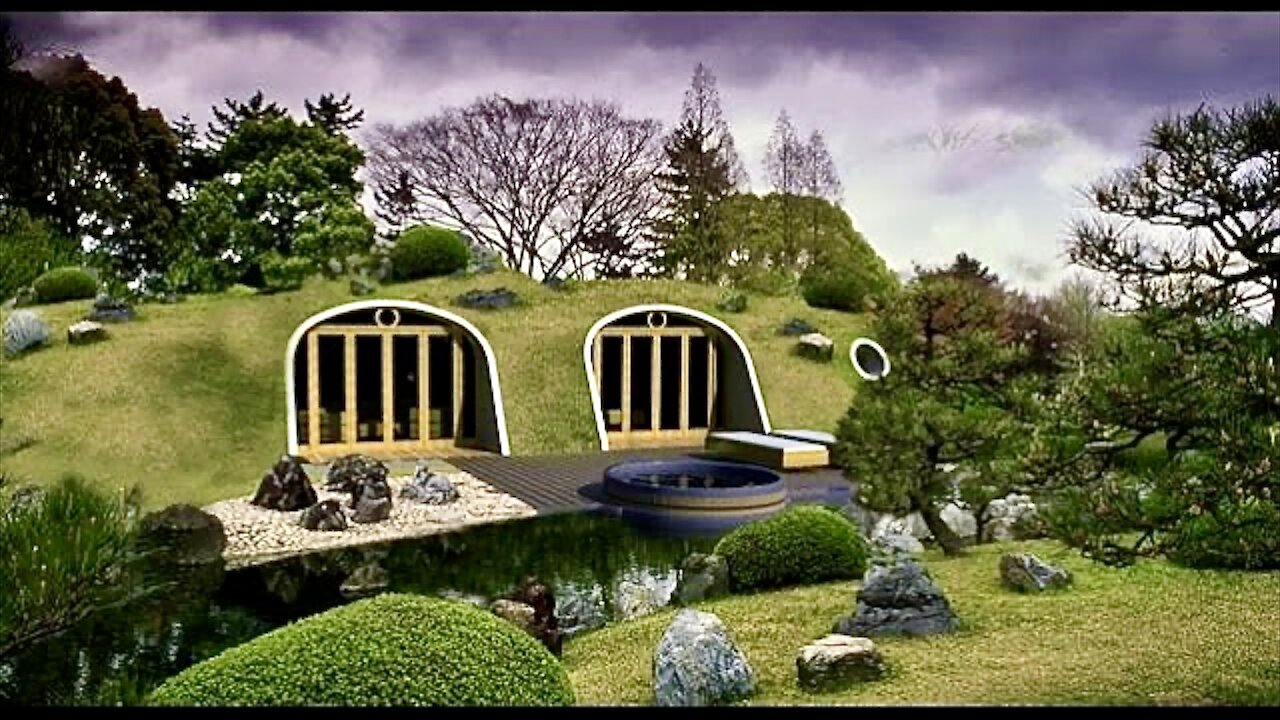Premium Only Content

Amazing Hobbit Homes ~ Prefabricated Domes ~ Earth Housing
Earth-sheltered houses have long been known to be very energy- efKcient, with the thermal mass of all that dirt keeping the temperature relatively even all year. However they have often been expensive to build and difKcult to make totally waterproof. Now a Florida company, Green Magic Homes, has designed a prefabricated system of Kber-reinforced polymers (FRP) where you can roll your own earth sheltered house at a reasonable price (US $41 per square foot for the shells). Their system addresses the problems of weight and cost: The Green Magic Homes system has addressed these problems in an entirely new way, using the age-old methods of building with earth in conjunction with the space-age technology of composite materials. The inner shell of the buildings is very strong, light, waterproof, and modular, and the earth covering is constructed in such a way that it collaborates structurally with the shell because of its layered construction and the vaulted geometry of the system.
The FRP components are made in their factory....Assembled on site with glue and stainless steel screws through those aanges sticking up, then covered with soil and planting. According to their FAQ, there can be 8 inches of soil on the top, and they are designed to handle about 44 pounds per square foot of live load on top of that. However they are inconsistent, they also make some claims about the R value of soil and how it is different than insulation:
The R value or heat transfer resistance value of a GREEN MAGIC HOME, is approximately 1 per every 10 cm of Earth. A typical GREEN MAGIC HOME has an average of 60 centimeters between walls and deck, which would give an R factor of 6. However, the thermal character of the mass of the Earth is quite different from the materials designed and used principally for the resistance to the transfer of heat (R value) such as polystyrene or polyurethane foam. When changing from soil to a less massive "insulating" material, you should understand the design performance with regards to heat capacity of the building and/or soil mass (K-value). A massive soil wall or roof can store heat energy to even out the temperature swings of day--lightweight insulation does not perform this way. The thermal value you get from 18 inches of soil far surpasses the 4.5 R-value (0.25 per inch). The use of earth as a large capacity heat storage makes it possible not only to reduce such buildings’ demand for heating and cooling energy, but also helps to preserve the local microclimate.
Music: What Must Be (Old Timey Mix) by Dhruva Aliman
Amazon- https://amzn.to/3eAjEgC
https://music.apple.com/us/artist/dhruva-aliman/363563637
https://dhruvaaliman.bandcamp.com/album/what-must-be
http://www.dhruvaaliman.com/
Spotify - https://open.spotify.com/artist/5XiFCr9iBKE6Cupltgnlet
#lordoftherings
#design
#architecture
-
 6:44
6:44
Seeker Land
1 month agoChina's New Deadly Drone Mothership - Jiu Tian - World's First Airborne UAV Launcher
105 -
 LIVE
LIVE
SpartakusLIVE
6 hours agoFriday NITE HYPE
4,688 watching -
 LIVE
LIVE
Drew Hernandez
6 hours agoGIDEON AI THREAT DETECTION SOFTWARE PUSH & NEW EPSTEIN EMAIL LEAK?
1,041 watching -
 2:03:51
2:03:51
TimcastIRL
3 hours agoTrans Minneapolis Shooter BLAMED Massacre On Mom & Gender Transition | Timcast IRL
140K123 -
 LIVE
LIVE
Man in America
9 hours agoIT DOESN'T ADD UP: The Trans Shooter's Story Is FULL of Holes
1,413 watching -
 LIVE
LIVE
StevieTLIVE
2 hours agoFriday Night Warzone HYPE
226 watching -
 LIVE
LIVE
SynthTrax & DJ Cheezus Livestreams
1 day agoFriday Night Synthwave 80s 90s Electronica and more DJ MIX Livestream Michael Jackson / AI Art Compilation Edition
238 watching -
 1:03:57
1:03:57
Sarah Westall
2 hours agoMara Lago Accord Joins the Fed, Fed Waves the White Flag & more w/ Andy Schectman
4.83K -
 LIVE
LIVE
I_Came_With_Fire_Podcast
1 day ago*BREAKING* Special Guest Katarina Szulc
140 watching -
 LIVE
LIVE
megimu32
2 hours agoOFF THE SUBJECT: FAFO Friday! Bodycams & Mario Kart Mayhem!
87 watching